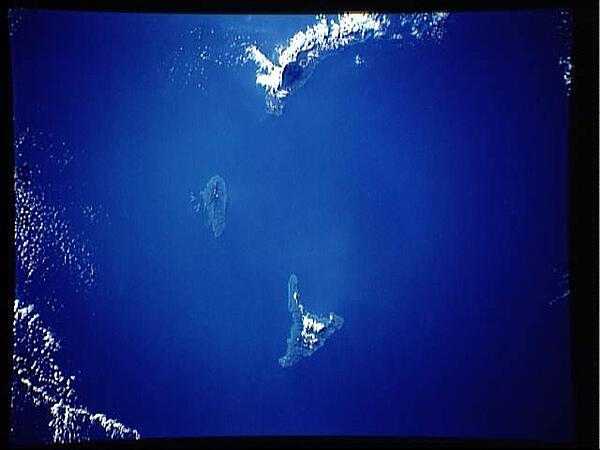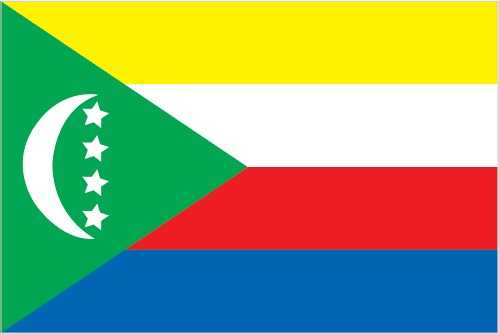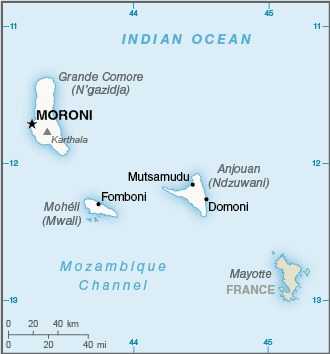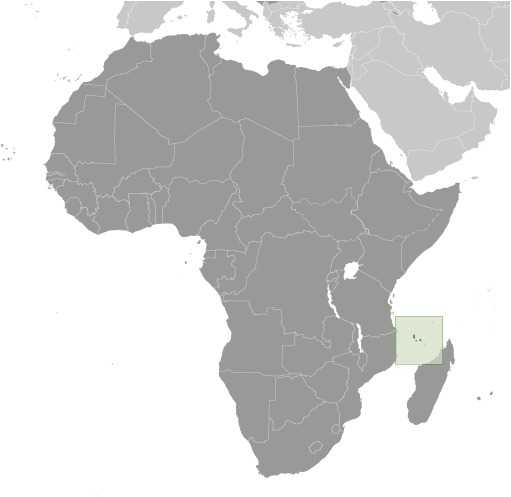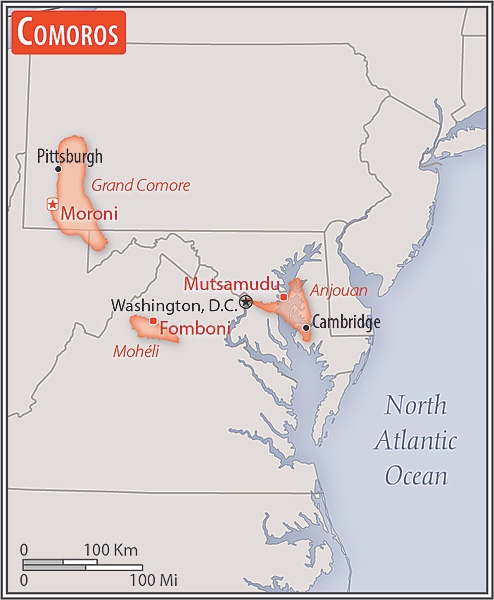Introduction
Background
For centuries prior to colonization in the 19th century, the Comoros archipelago in the Indian Ocean served as a key node in maritime trade networks that connected the Middle East, India, and eastern African regions. Composed of the islands of Anjouan, Mayotte, Moheli, and Grande Comore, Comoros spent most of the 20th century as a colonial outpost until it declared independence from France on 6 July 1975. Residents of Mayotte, however, voted to remain in France, and the French Government has since classified it as a French Overseas Department.
Since independence, Comoros has weathered approximately 20 successful and attempted coups, mostly between 1975 and 2000, resulting in prolonged political instability and stunted economic development. In 2002, President AZALI Assoumani became the first elected president following the completion of the Fomboni Accords, in which the islands of Grande Comore, Anjouan, and Moheli agreed to rotate the presidency among the islands every five years. This power-sharing agreement also included provisions allowing each island to maintain its local government. In 2007, Mohamed BACAR effected Anjouan's de-facto secession from the Union of the Comoros, refusing to step down when Comoros' other islands held legitimate elections. The African Union (AU) initially attempted to resolve the political crisis with sanctions and a naval blockade of Anjouan, but in 2008, the AU and Comoran soldiers seized the island. The island's inhabitants generally welcomed the move. In 2011, Ikililou DHOININE won the presidency in peaceful elections widely deemed to be free and fair. In closely contested elections in 2016, AZALI won a second term, when the rotating presidency returned to Grande Comore. In 2018, a referendum -- which the opposition parties boycotted -- approved a new constitution that extended presidential term limits and abolished the requirement for the presidency to rotate between the three main islands. AZALI formed a new government later that year, and he subsequently ran and was reelected in 2019. AZALI was reelected again in January 2024 in an election that the opposition disputed but the Supreme Court validated.
Visit the Definitions and Notes page to view a description of each topic.
Geography
Location
Southern Africa, group of islands at the northern mouth of the Mozambique Channel, about two-thirds of the way between northern Madagascar and northern Mozambique
Geographic coordinates
12 10 S, 44 15 E
Map references
Africa
Land boundaries
total: 0 km
Coastline
340 km
Maritime claims
territorial sea: 12 nm
exclusive economic zone: 200 nm
Climate
tropical marine; rainy season (November to May)
Terrain
volcanic islands, interiors vary from steep mountains to low hills
Elevation
highest point: Karthala 2,360 m
lowest point: Indian Ocean 0 m
Land use
agricultural land: 84.4% (2018 est.)
arable land: 46.7% (2018 est.)
permanent crops: 29.6% (2018 est.)
permanent pasture: 8.1% (2018 est.)
forest: 1.4% (2018 est.)
other: 14.2% (2018 est.)
Irrigated land
1.3 sq km (2012)
Population distribution
the capital city of Maroni, located on the western side of the island of Grande Comore, is the country's largest city; however, of the three islands that comprise Comoros, it is Anjouan that is the most densely populated as shown in this population distribution map
Natural hazards
cyclones possible during rainy season (December to April); volcanic activity on Grand Comore
volcanism: Karthala (2,361 m) on Grand Comore Island last erupted in 2007; a 2005 eruption forced thousands of people to be evacuated and produced a large ash cloud
Geography - note
important location at northern end of Mozambique Channel; the only Arab League country that lies entirely in the Southern Hemisphere
People and Society
Population
total: 900,141
male: 435,758
female: 464,383 (2024 est.)
comparison rankings: female 164; male 165; total 164
Nationality
noun: Comoran(s)
adjective: Comoran
Ethnic groups
Antalote, Cafre, Makoa, Oimatsaha, Sakalava
Languages
Arabic (official), French (official), Shikomoro (official; similar to Swahili) (Comorian)
Religions
Muslim 98.1% (overwhelmingly Sunni Muslim, small Shia Muslim and Ahmadiyya Muslim populations), ethnic religionist 1.1%, Christian 0.6%, other 0.3% (2020 est.)
note: Sunni Islam is the state religion
Demographic profile
Comoros’ population is a melange of Arabs, Persians, Indonesians, Africans, and Indians, and the much smaller number of Europeans that settled on the islands between the 8th and 19th centuries, when they served as a regional trade hub. The Arab and Persian influence is most evident in the islands’ overwhelmingly Muslim majority – about 98% of Comorans are Sunni Muslims. The country is densely populated, averaging nearly 350 people per square mile, although this varies widely among the islands, with Anjouan being the most densely populated.
Given the large share of land dedicated to agriculture and Comoros’ growing population, habitable land is becoming increasingly crowded. The combination of increasing population pressure on limited land and resources, widespread poverty, and poor job prospects motivates thousands of Comorans each year to attempt to illegally migrate using small fishing boats to the neighboring island of Mayotte, which is a French territory. The majority of legal Comoran migration to France came after Comoros’ independence from France in 1975, with the flow peaking in the mid-1980s.
At least 150,000 to 200,000 people of Comoran citizenship or descent live abroad, mainly in France, where they have gone seeking a better quality of life, job opportunities, higher education (Comoros has no universities), advanced health care, and to finance elaborate traditional wedding ceremonies (aada). Remittances from the diaspora are an economic mainstay, in 2013 representing approximately 25% of Comoros’ GDP and significantly more than the value of its exports of goods and services (only 15% of GDP). Grand Comore, Comoros’ most populous island, is both the primary source of emigrants and the main recipient of remittances. Most remittances are spent on private consumption, but this often goes toward luxury goods and the aada and does not contribute to economic development or poverty reduction. Although the majority of the diaspora is now French-born with more distant ties to Comoros, it is unclear whether they will sustain the current level of remittances.
Age structure
0-14 years: 32.6% (male 146,480/female 146,626)
15-64 years: 62.8% (male 271,139/female 294,231)
65 years and over: 4.6% (2024 est.) (male 18,139/female 23,526)
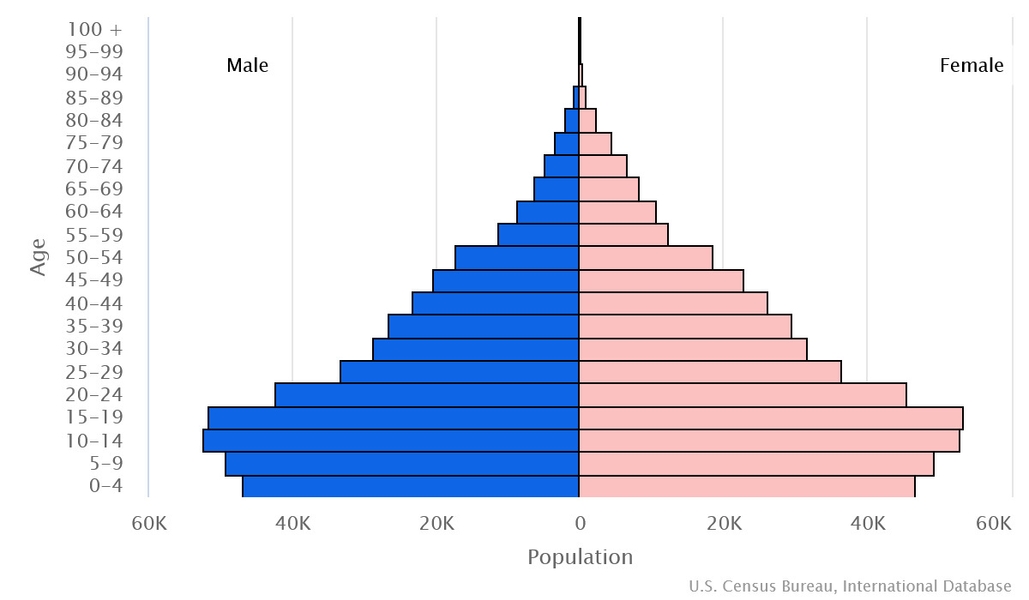
Dependency ratios
total dependency ratio: 74.1
youth dependency ratio: 66.6
elderly dependency ratio: 7.5
potential support ratio: 13.3 (2021 est.)
Median age
total: 22.7 years (2024 est.)
male: 22.1 years
female: 23.3 years
comparison ranking: total 183
Population distribution
the capital city of Maroni, located on the western side of the island of Grande Comore, is the country's largest city; however, of the three islands that comprise Comoros, it is Anjouan that is the most densely populated as shown in this population distribution map
Urbanization
urban population: 30.1% of total population (2023)
rate of urbanization: 2.97% annual rate of change (2020-25 est.)
Major urban areas - population
62,000 MORONI (capital) (2018)
Sex ratio
at birth: 1.03 male(s)/female
0-14 years: 1 male(s)/female
15-64 years: 0.92 male(s)/female
65 years and over: 0.77 male(s)/female
total population: 0.94 male(s)/female (2024 est.)
Mother's mean age at first birth
23 years (2012 est.)
note: data represents median age at first birth among women 25-49
Infant mortality rate
total: 54.9 deaths/1,000 live births (2024 est.)
male: 64.9 deaths/1,000 live births
female: 44.7 deaths/1,000 live births
comparison ranking: total 14
Life expectancy at birth
total population: 67.8 years (2024 est.)
male: 65.5 years
female: 70.2 years
comparison ranking: total population 193
Gross reproduction rate
1.28 (2024 est.)
Contraceptive prevalence rate
19.4% (2012)
Drinking water source
improved: urban: 97.4% of population
rural: 88.5% of population
total: 91% of population
unimproved: urban: 2.6% of population
rural: 11.5% of population
total: 8.9% of population (2017 est.)
Current health expenditure
5.4% of GDP (2020)
Physician density
0.26 physicians/1,000 population (2018)
Sanitation facility access
improved: urban: 62.4% of population
rural: 43.6% of population
total: 49% of population
unimproved: urban: 37.6% of population
rural: 56.4% of population
total: 51% of population (2017 est.)
Alcohol consumption per capita
total: 0.18 liters of pure alcohol (2019 est.)
beer: 0.04 liters of pure alcohol (2019 est.)
wine: 0.07 liters of pure alcohol (2019 est.)
spirits: 0.07 liters of pure alcohol (2019 est.)
other alcohols: 0 liters of pure alcohol (2019 est.)
comparison ranking: total 173
Tobacco use
total: 20.3% (2020 est.)
male: 29.5% (2020 est.)
female: 11.1% (2020 est.)
comparison ranking: total 83
Currently married women (ages 15-49)
61.2% (2023 est.)
Literacy
definition: age 15 and over can read and write
total population: 62%
male: 67%
female: 56.9% (2021)
School life expectancy (primary to tertiary education)
total: 11 years
male: 11 years
female: 11 years (2014)
Environment
Environment - current issues
deforestation; soil degradation and erosion results from forest loss and from crop cultivation on slopes without proper terracing; marine biodiversity affected as soil erosion leads to the silting of coral reefs
Environment - international agreements
party to: Biodiversity, Climate Change, Climate Change-Kyoto Protocol, Climate Change-Paris Agreement, Comprehensive Nuclear Test Ban, Desertification, Endangered Species, Hazardous Wastes, Law of the Sea, Ozone Layer Protection, Ship Pollution, Wetlands
signed, but not ratified: none of the selected agreements
Climate
tropical marine; rainy season (November to May)
Land use
agricultural land: 84.4% (2018 est.)
arable land: 46.7% (2018 est.)
permanent crops: 29.6% (2018 est.)
permanent pasture: 8.1% (2018 est.)
forest: 1.4% (2018 est.)
other: 14.2% (2018 est.)
Urbanization
urban population: 30.1% of total population (2023)
rate of urbanization: 2.97% annual rate of change (2020-25 est.)
Air pollutants
particulate matter emissions: 14.37 micrograms per cubic meter (2019 est.)
carbon dioxide emissions: 0.2 megatons (2016 est.)
methane emissions: 0.19 megatons (2020 est.)
Waste and recycling
municipal solid waste generated annually: 91,013 tons (2015 est.)
Total water withdrawal
municipal: 4.8 million cubic meters (2017 est.)
industrial: 500,000 cubic meters (2017 est.)
agricultural: 4.7 million cubic meters (2017 est.)
Total renewable water resources
1.2 billion cubic meters (2020 est.)
Government
Country name
conventional long form: Union of the Comoros
conventional short form: Comoros
local long form: Udzima wa Komori (Comorian)/Union des Comores (French)/Al Ittihad al Qumuri (Arabic)
local short form: Komori (Comorian)/Les Comores (French)/Juzur al Qamar (Arabic)
former: Comorian State, Federal Islamic Republic of the Comoros
etymology: name derives from the Arabic designation "Juzur al Qamar" meaning "Islands of the Moon"
Government type
federal presidential republic
Capital
name: Moroni
geographic coordinates: 11 42 S, 43 14 E
time difference: UTC+3 (8 hours ahead of Washington, DC, during Standard Time)
etymology: Moroni derives from "mroni," which means "at the river" in Shingazidja, the Comorian language spoken on Grande Comore (N'gazidja)
Administrative divisions
3 islands; Anjouan (Ndzuwani), Grande Comore (N'gazidja), Moheli (Mwali)
Independence
6 July 1975 (from France)
National holiday
Independence Day, 6 July (1975)
Constitution
history: previous 1996, 2001; newest adopted 30 July 2018
amendments: proposed by the president of the union or supported by at least one third of the Assembly of the Union membership; adoption requires approval by at least three-quarters majority of the total Assembly membership or approval in a referendum
note: a referendum held on 30 July 2018 - boycotted by the opposition - overwhelmingly approved a new constitution that allows for 2 consecutive 5-year presidential terms while retaining the rotating presidency within the islands
Legal system
mixed legal system of Islamic religious law, the French civil code of 1975, and customary law
International law organization participation
has not submitted an ICJ jurisdiction declaration; accepts ICCt jurisdiction
Citizenship
citizenship by birth: no
citizenship by descent only: at least one parent must be a citizen of the Comoros
dual citizenship recognized: no
residency requirement for naturalization: 10 years
Suffrage
18 years of age; universal
Executive branch
chief of state: President AZALI Assoumani (since 26 May 2016)
head of government: President AZALI Assoumani (since 26 May 2016)
cabinet: Council of Ministers appointed by the president
elections/appointments: president directly elected by absolute majority vote in 2 rounds if needed for a 5-year term; election last held on 14 January 2024 (next to be held in 2029)
election results:
2024: AZALI Assoumani reelected president in first round - AZALI Assoumani (CRC) 63%, SALIM ISSA Abdallah (PJ) 20.3%, DAOUDOU Abdallah Mohamed (Orange Party) 5.9%, Bourhane HAMIDOU (independent) 5.1%
2019: AZALI Assoumani elected president in first round - AZALI Assoumani (CRC) 60.8%, Ahamada MAHAMOUDOU (PJ) 14.6%, Mouigni Baraka Said SOILIHI (independent) 5.6%, other 19%
note: the president is both chief of state and head of government
Legislative branch
description: unicameral Assembly of the Union (33 seats; 24 members directly elected by absolute majority vote in 2 rounds if needed and 9 members indirectly elected by the 3 island assemblies; members serve 5-year terms)
elections: last held on 19 January 2020 with a runoff on 23 February 2020 (next to be held in 2025)
election results: percent of vote by party in first round - CRC 60.9%, Orange Party 4.3%, independent 30.8%, other 4%; seats by party in the first round - CRC 16, Orange Party 1, independent 2; percent of vote by party in the second round - CRC 54.1%, Orange Party 18.9%, independent 26.1%, other 1%; seats by party in the second round - CRC 4, Orange Party 1; note - 9 additional seats filled by the 3 island assemblies; composition - men 20, women 4, percentage women 16.7%; note - main opposition parties boycotted election;
Judicial branch
highest court(s): Supreme Court or Cour Supreme (consists of 7 judges)
judge selection and term of office: Supreme Court judges - selection and term of office NA
subordinate courts: Court of Appeals (in Moroni); Tribunal de premiere instance; island village (community) courts; religious courts
Political parties and leaders
Convention for the Renewal of the Comoros or CRC [AZALI Assoumani]
Juwa Party (Parti Juwa) or PJ [Ahmed Abdallah Mohamed SAMBI]
Orange Party [Mohamed DAOUDOU] (2020)
International organization participation
ACP, AfDB, AMF, AOSIS, AU, CAEU (candidates), COMESA, FAO, FZ, G-77, IBRD, ICAO, ICCt, ICRM, IDA, IDB, IFAD, IFC, IFRCS, ILO, IMF, IMO, IMSO, InOC, Interpol, IOC, IOM, ITSO, ITU, ITUC (NGOs), LAS, MIGA, NAM, OIC, OIF, OPCW, UN, UNCTAD, UNESCO, UNIDO, UPU, WCO, WHO, WIPO, WMO, WTO (observer)
Diplomatic representation in the US
chief of mission: Ambassador Issimail CHANFI (since 23 December 2020); note - also Permanent Representative to the UN
chancery: Permanent Mission to the UN, 866 United Nations Plaza, Suite 495, New York, NY 10017
telephone: [1] (212) 750-1637
FAX: [1] (212) 750-1657
email address and website:
comoros@un.int
https://www.un.int/comoros/
Diplomatic representation from the US
embassy: the US does not have an embassy in Comoros; the US Ambassador to Madagascar is accredited to Comoros
Flag description
four equal horizontal bands of yellow (top), white, red, and blue, with a green isosceles triangle based on the hoist; centered within the triangle is a vertical white crescent moon with the convex side facing the hoist and four white, five-pointed stars placed vertically in a line between the points of the crescent; the horizontal bands and the four stars represent the four main islands of the archipelago - Mwali, N'gazidja, Ndzuwani, and Mahore (Mayotte - department of France, but claimed by Comoros)
note: the crescent, stars, and color green are traditional symbols of Islam
National symbol(s)
four five-pointed stars and crescent moon; national colors: green, white
National anthem
name: "Udzima wa ya Masiwa" (The Union of the Great Islands)
lyrics/music: Said Hachim SIDI ABDEREMANE/Said Hachim SIDI ABDEREMANE and Kamildine ABDALLAH
note: adopted 1978
Economy
Economic overview
small trade-based island economy; declining remittances; new structural and fiscal reforms; adverse cyclone and COVID-19 impacts; manageable debts; fragile liquidity environment; large foreign direct investment; state-owned enterprises suffering
Real GDP (purchasing power parity)
$2.961 billion (2023 est.)
$2.883 billion (2022 est.)
$2.816 billion (2021 est.)
note: data in 2021 dollars
comparison ranking: 196
Real GDP growth rate
2.7% (2023 est.)
2.39% (2022 est.)
2.11% (2021 est.)
note: annual GDP % growth based on constant local currency
comparison ranking: 117
Real GDP per capita
$3,500 (2023 est.)
$3,400 (2022 est.)
$3,400 (2021 est.)
note: data in 2021 dollars
comparison ranking: 193
GDP (official exchange rate)
$1.352 billion (2023 est.)
note: data in current dollars at official exchange rate
Inflation rate (consumer prices)
1% (2017 est.)
1.8% (2016 est.)
-4.29% (2013 est.)
note: annual % change based on consumer prices
comparison ranking: 18
GDP - composition, by sector of origin
agriculture: 47.7% (2017 est.)
industry: 11.8% (2017 est.)
services: 40.5% (2017 est.)
comparison rankings: services 210; industry 202; agriculture 5
GDP - composition, by end use
household consumption: 92.6% (2017 est.)
government consumption: 20.4% (2017 est.)
investment in fixed capital: 20% (2017 est.)
investment in inventories: -3.1% (2017 est.)
exports of goods and services: 17.2% (2017 est.)
imports of goods and services: -47.1% (2017 est.)
Agricultural products
coconuts, bananas, cassava, yams, maize, taro, milk, tomatoes, sweet potatoes, pulses (2022)
note: top ten agricultural products based on tonnage
Industries
fishing, tourism, perfume distillation
Industrial production growth rate
0% (2023 est.)
note: annual % change in industrial value added based on constant local currency
comparison ranking: 153
Labor force
234,000 (2023 est.)
note: number of people ages 15 or older who are employed or seeking work
comparison ranking: 176
Unemployment rate
5.8% (2023 est.)
5.85% (2022 est.)
5.86% (2021 est.)
note: % of labor force seeking employment
comparison ranking: 118
Youth unemployment rate (ages 15-24)
total: 21.7% (2021 est.)
male: 21.8%
female: 21.5%
comparison ranking: total 73
Population below poverty line
42.4% (2013 est.)
note: % of population with income below national poverty line
Gini Index coefficient - distribution of family income
45.3 (2014 est.)
note: index (0-100) of income distribution; higher values represent greater inequality
comparison ranking: 22
Household income or consumption by percentage share
lowest 10%: 1.6% (2014 est.)
highest 10%: 33.7% (2014 est.)
note: % share of income accruing to lowest and highest 10% of population
Remittances
20.77% of GDP (2023 est.)
22.68% of GDP (2022 est.)
22.22% of GDP (2021 est.)
note: personal transfers and compensation between resident and non-resident individuals/households/entities
Budget
revenues: $223 million (2018 est.)
expenditures: $228 million (2018 est.)
Current account balance
-$6.614 million (2022 est.)
-$4.076 million (2021 est.)
-$22.048 million (2020 est.)
note: balance of payments - net trade and primary/secondary income in current dollars
comparison ranking: 83
Exports
$165.347 million (2022 est.)
$128.331 million (2021 est.)
$68.937 million (2020 est.)
note: balance of payments - exports of goods and services in current dollars
comparison ranking: 207
Exports - partners
Turkey 23%, India 19%, UAE 9%, US 9%, Indonesia 8% (2022)
note: top five export partners based on percentage share of exports
Exports - commodities
cloves, ships, vanilla, essential oils, scrap iron (2022)
note: top five export commodities based on value in dollars
Imports
$479.94 million (2022 est.)
$415.965 million (2021 est.)
$343.608 million (2020 est.)
note: balance of payments - imports of goods and services in current dollars
comparison ranking: 205
Imports - partners
UAE 25%, China 19%, India 12%, France 8%, Tanzania 7% (2022)
note: top five import partners based on percentage share of imports
Imports - commodities
rice, refined petroleum, poultry, water, synthetic fabric (2022)
note: top five import commodities based on value in dollars
Reserves of foreign exchange and gold
$324.561 million (2023 est.)
$283.746 million (2022 est.)
$329.672 million (2021 est.)
note: holdings of gold (year-end prices)/foreign exchange/special drawing rights in current dollars
comparison ranking: 179
Debt - external
$199.8 million (31 December 2017 est.)
$132 million (31 December 2016 est.)
comparison ranking: 189
Exchange rates
Comoran francs (KMF) per US dollar -
Exchange rates:
454.991 (2023 est.)
467.184 (2022 est.)
415.956 (2021 est.)
430.721 (2020 est.)
439.463 (2019 est.)
Energy
Electricity access
electrification - total population: 89.9% (2022 est.)
electrification - urban areas: 100%
electrification - rural areas: 82.9%
Electricity
installed generating capacity: 4.036 million kW (2022 est.)
consumption: 113.052 million kWh (2022 est.)
transmission/distribution losses: 22.1 million kWh (2022 est.)
comparison rankings: transmission/distribution losses 26; consumption 198; installed generating capacity 99
Electricity generation sources
fossil fuels: 100% of total installed capacity (2022 est.)
Coal
imports: 2,000 metric tons (2022 est.)
Petroleum
refined petroleum consumption: 3,000 bbl/day (2022 est.)
Carbon dioxide emissions
372,000 metric tonnes of CO2 (2022 est.)
from petroleum and other liquids: 372,000 metric tonnes of CO2 (2022 est.)
comparison ranking: total emissions 192
Communications
Telephones - fixed lines
total subscriptions: 7,000 (2022 est.)
subscriptions per 100 inhabitants: (2022 est.) less than 1
comparison ranking: total subscriptions 198
Telephones - mobile cellular
total subscriptions: 839,000 (2022 est.)
subscriptions per 100 inhabitants: 100 (2022 est.)
comparison ranking: total subscriptions 168
Telecommunication systems
general assessment: Comoros launched a special program for the construction of a wireless network to inter connect the 3 islands of the archipelago; telephone service limited to the islands' few towns (2020)
domestic: fixed-line connections less than 1 per 100 persons; mobile-cellular usage about 104 per 100 persons (2021)
international: country code - 269; landing point for the EASSy, Comoros Domestic Cable System, Avassa, and FLY-LION3 fiber-optic submarine cable system connecting East Africa with Europe; HF radiotelephone communications to Madagascar and Reunion (2019)
Broadcast media
national state-owned TV station and a TV station run by Anjouan regional government; national state-owned radio; regional governments on the islands of Grande Comore and Anjouan each operate a radio station; a few independent and small community radio stations operate on the islands of Grande Comore and Moheli, and these two islands have access to Mayotte Radio and French TV
Internet users
total: 221,400 (2021 est.)
percent of population: 27% (2021 est.)
comparison ranking: total 179
Broadband - fixed subscriptions
total: 1,066 (2020 est.)
subscriptions per 100 inhabitants: 0.1 (2020 est.)
comparison ranking: total 201
Transportation
National air transport system
number of registered air carriers: 2 (2020)
inventory of registered aircraft operated by air carriers: 9
Merchant marine
total: 273 (2023)
by type: bulk carrier 17, container ship 7, general cargo 125, oil tanker 36, other 88
comparison ranking: total 58
Ports
total ports: 4 (2024)
large: 0
medium: 0
small: 0
very small: 4
ports with oil terminals: 3
key ports: Dzaoudzi, Fomboni, Moroni, Moutsamoudu
Military and Security
Military and security forces
National Army for Development (l'Armee Nationale de Developpement, AND): Comoran Defense Force (Force Comorienne de Defense or FCD; includes Comoran National Gendarmerie); Ministry of Interior: Coast Guard, Federal Police, National Directorate of Territorial Safety (2023)
note 1: when the Gendarmerie serves as the judicial police, it reports to the Minister of Justice; the Gendarmerie also has an intervention platoon that may act under the authority of the interior minister
note 2: the National Directorate of Territorial Safety oversees customs and immigration
note 3: the FCD is also known as the Comoran Security Force
Military and security service personnel strengths
estimated 600 Defense Force personnel; estimated 500 Federal Police (2023)
Military equipment inventories and acquisitions
the defense forces are lightly armed with a mix of mostly older equipment originating from several countries, including France, Italy, Russia, and the US (2023)
Military service age and obligation
18 years of age for 2-year voluntary military service for men and women; no conscription (2021)
Military - note
the focus for the security forces is search and rescue operations and maintaining internal security; a defense treaty with France provides naval resources for the protection of territorial waters, training of Comoran military personnel, and air surveillance; France maintains a small maritime base and a Foreign Legion contingent on neighboring Mayotte (2023)
